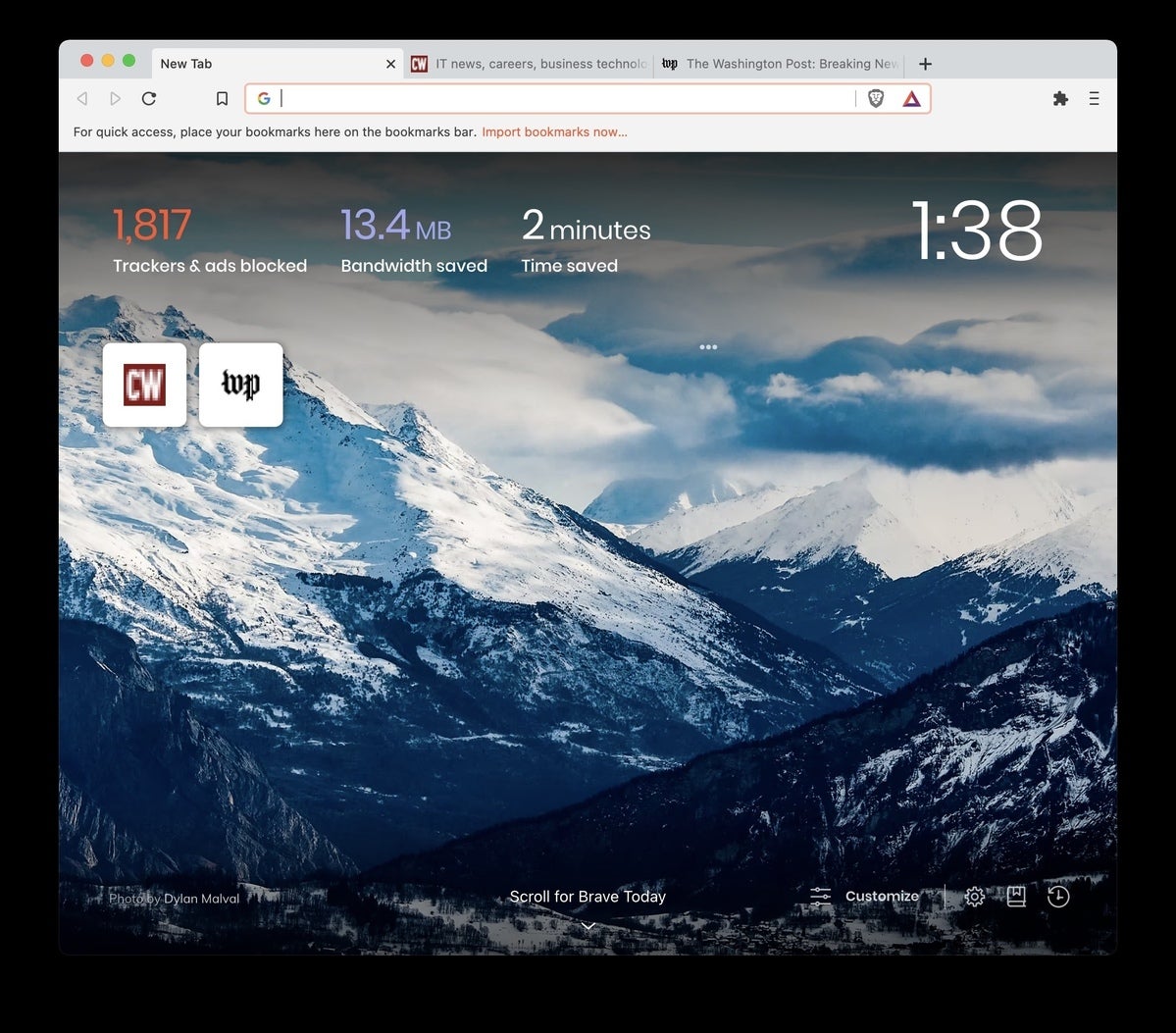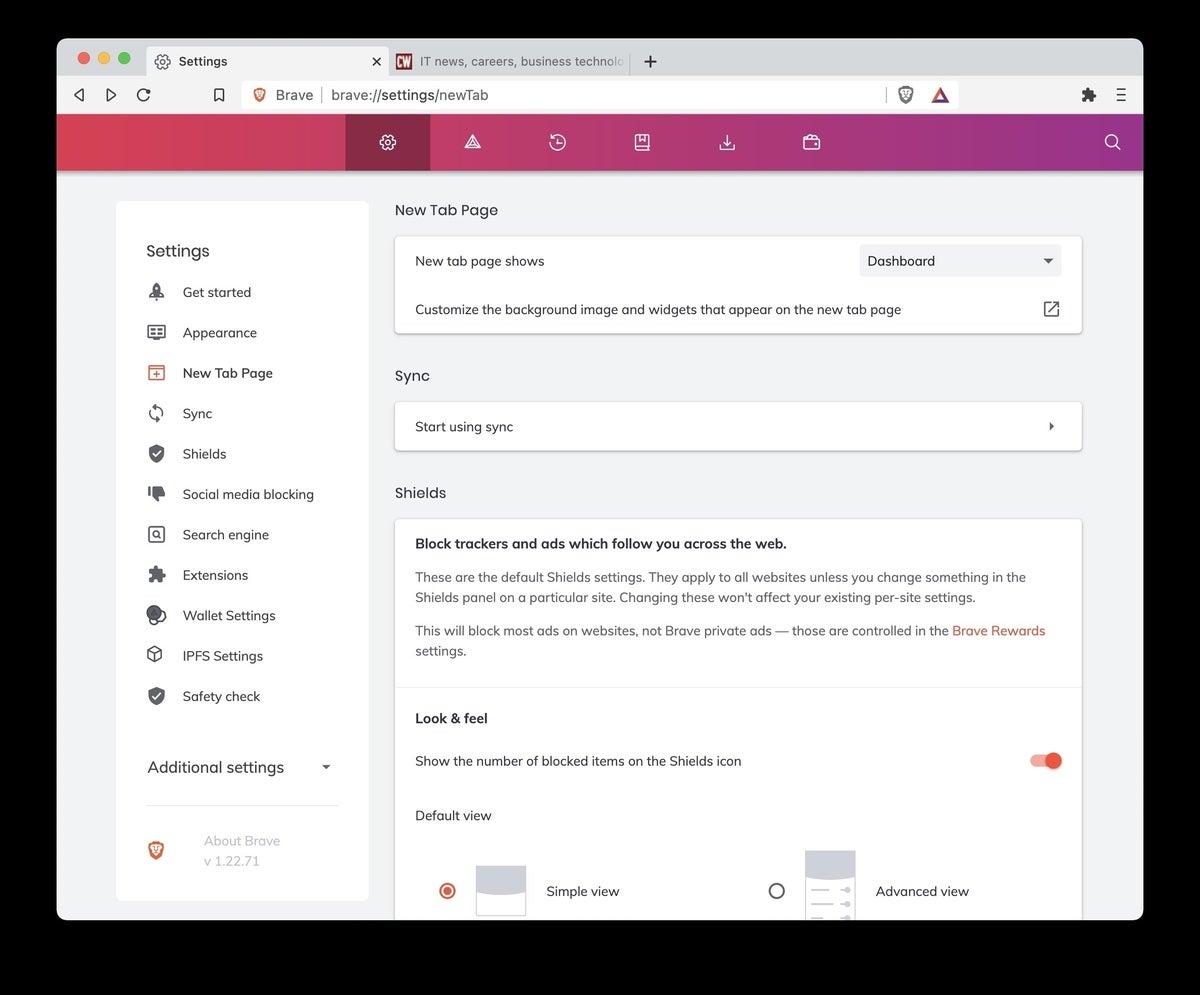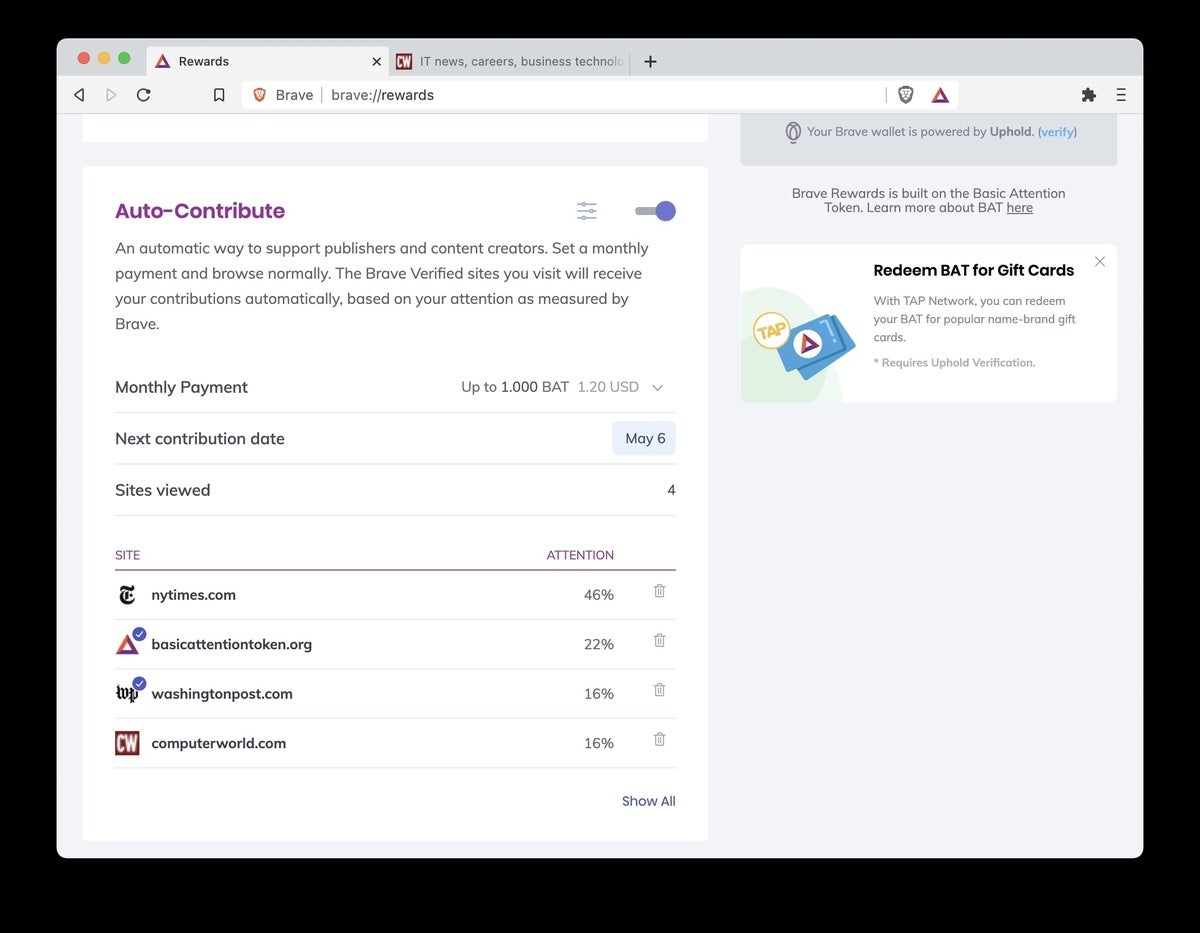How Do You Track Spined Lauris Osrs
The Brave browser basics: what it does, how it differs from rivals
The web browser from Brave Software relies on an unusual business model: it strips out ads from websites, replaces them with its own ads, then allows users to send money to sites they like.
![]() By
By
Senior Reporter, Computerworld |
Boutique browsers try to scratch out a living by finding a niche underserved by the usual suspects. Brave is one of those browsers.
Brave has gotten more attention than most alternate browsers, partly because a co-founder was one of those who kick-started Mozilla's Firefox, partly because of its very unusual — some say parasitical — business model.
That model, which relies on stripping every site of every ad, then substituting different ads, came under attack almost immediately from publishers that depended on online advertising for their livelihood. "Your plan to use our content to sell your advertising is indistinguishable from a plan to steal our content to publish on your own website ((emphasis in original," lawyers for 17 newspaper publishers wrote in a cease-and-desist letter to Brave Software in April 2016.
Computerworld took a deep dive into Brave to figure out what it is, what it does and how it does it. Here's what you need to know to decide whether Brave's for you. (If you do decide to try it out, download information is detailed below.)
 Brave
Brave The Brave browser can show users how many ad trackers (and ads) have been blocked.
What is the Brave browser?
Brave is a more-or-less standard browser that lets users navigate to websites, run web apps, and display online content. Like other browsers, it is free to download and use, remembers site authentication information, and can block online ads from appearing on sites.
Its maker, Brave Software, is among the newer entries in the browser battles, having previewed the browser in January 2016. (By comparison, Google's Chrome launched in September 2008 and Microsoft's Edge traces its lineage to July 2015.) The firm was co-founded by Brendan Eich, the creator of JavaScript and a co-founder of Mozilla, after he left that browser vendor under pressure for supporting California's 2008 Proposition 8, a ballot measure that banned same-sex marriage.
Does Brave block ads within search results?
No. Brave doesn't lay a finger on those, including the ubiquitous Google Ads (formerly AdWords) advertisements within Google's results. That's not a surprise: Ad blocking extensions don't stymie search ads either.
What's under Brave's hood?
Brave is built atop Chromium, the open-source project Google and others maintain. (Google uses Chromium to provide the source code for its Chrome browser.) The back-end technologies that power Chrome — including the Blink rendering engine and the V8 JavaScript engine — also power Brave.
On iOS, Brave instead relies on WebKit, the open-source foundation that also powers Apple's Safari browser. WebKit is required as the backbone of any third-party browser submitted to Apple's App Store.
Other browsers that depend on Chromium include Edge, Opera, Vivaldi and Qihoo 360, one of the most popular Chinese-made browsers.
(In hindsight, Eich's decision to go with Chromium — rather than with Firefox's Gecko rendering engine — was smart, even though most expected Brave to lean Mozilla's way, what with Eich's connection to the latter.)
 Brave
Brave Brave's default browser behavior can be customized in preferences.
Can Brave run Chrome's extensions?
Glad you asked. Yes, is the answer.
After choosing "Extensions" from Brave's Window menu, the browser heads to the Chrome Web Store, the official market for add-ons and themes suitable for, well, Chrome (and some, though not all, Chromium-based rivals). There, users can pick and choose.
What's Brave's pitch?
Brave boasts two things: speed and privacy. Both result from its ad-stripping strategy.
On the desktop, Brave Software contends that its browser loads pages three times faster than Google's Chrome, the world's No. 1 browser. The speed increases are not surprising. By eliminating ads and ad trackers, Brave downloads much less content from a website than any browser sans an ad-blocking extension.
There's nothing technologically-special about Brave's performance; it's simply retrieving less data than other browsers.
By eliminating ad trackers, Brave blocks efforts by advertisers to first identify users, then follow those users. That makes Brave users more anonymous, Brave Software has argued. "(Users) especially don't like it when large companies map together their online behavior and offline behavior," the firm said in a very early blog post.
The company has also sworn that it does not, and will not, store any user data on its servers. "We keep user data out of our cloud Brave Vault by default," Eich wrote in his inaugural post of Jan. 20, 2016. "It's better for you and us that we don't store any of your data without your permission."
What makes Brave different from other browsers?
What sets Brave apart is its aggressive anti-ad attitude. The browser was built to strip online ads from websites and its maker's business model relies not only on ad blocking, but on replacing the scratched-out ads with advertisements from its own network. It's as if a new sports cable network announced it would use technology to remove ads from another network's programs, say, ESPN's, then rebroadcast those programs with ads of its own devising, with the revenue from those ads going in its pockets, not ESPN's.
Brave also eliminates all ad trackers, the often-minute page components advertisers and site publishers deploy to identify users so that they know what other sites those users visit or have visited. Trackers are used by ad networks to show products similar to ones purchased, or just considered, leading to the meme of persistently seeing the same ad no matter where one navigates.
Since Brave's appearance, mainstream browsers — Chrome, Edge, Firefox, Safari, and others — have also adopted various kinds of anti-tracking defenses. (In fact, where once performance was the battlefield for browser skirmishes, with page rendering speeds the gauge of success, privacy features now represent the battleground, and it's tracker blocking on which the apps are judged.) Brave's claim of privacy superiority, then, is not as compelling as it was, say, three years ago.
Is Brave's advantage blocking ads and trackers?
No, and for the talk early on, it never was. Unlike other browsers that block ads and trackers — whether natively or when equipped with an ad-blocking add-on — Brave has created an ad ecosystem to replace what it wipes off websites.
Brave scrubs sites of ads and ad tracking, then replaces those ads with its own advertisements, which are not individually targeted but instead aimed at an anonymous aggregate of the browser's user base. Brave has said it went that route rather than a simpler all-ad-elimination model because, while few users relish ads, many realize that without them, the commercial web as it now exists would be nigh impossible. That's why, claimed Brave, it not only swapped its advertisements for those originally displayed by a site, but built a cyrpto-currency-based system that can, theoretically at least, compensate those same websites.
It's definitely a user-centric model. "We're building a solution designed to ... give users the fair deal they deserve for coming to the web to browse and contribute," Eich maintained two years ago.
Brave's ads are quite different than the traditional in-page ads web users know — and in many ways, hate. Instead, Brave's ads appear as notifications that pop up — just like other in-browser notifications that sites request for display — in front of the user. Clicking on one of these notification-like ads opens a new tab in Brave, where the "real" ad content appears.
How will Brave and its users 'pay' websites?
The foundation of the Brave economy is "Basic Attention Tokens" or BATs, which have a value derived from a cyber-currency. Those tokens will be awarded based on user attention, or more plainly, time spent viewing ads and content. Brave users who agree to receive ads will be rewarded with BATs; the tokens can be passed to publishers as support for their sites. Alternately, Brave envisions users trading their tokens for premium content or advanced site features.
Brave users have been viewing ads since April 2019 and are now receiving ads, although it's unclear when Brave will actually begin serving ads to all users who opt in, or when the exchanging-BATs part of the process will be ready.
As of April 7, a single BAT was worth about $1.20. (There were approximately 1.5 billion BATs in circulation, for a total market cap of nearly $1.8 billion.) In its latest Monthly Active User (MAU) status update, Brave claimed that users had contributed some 26 million BATs to site publishers and web content creators (the latter are often posting on social media, or sites/services like YouTube and Twitch).
 Brave
Brave The financial foundation of Brave relies on "Basic Attention Tokens" or BATs, which are tied to a cyber-currency and used to support websites. Users can automatically "tip" sites based on how much of their total online time is spent viewing their content.
How is Brave funded?
Some browsers don't have to worry about making money because they're just a cog in a much larger machine. For example, Chrome, Microsoft's Edge, and Apple's Safari don't need to turn a profit because their parent organizations value them for non-monetary reasons as well as their ability to produce revenue in some fashion.
Other browsers, notably Firefox, are the opposite: They must find a way to generate revenue. Mozilla does that by striking deals with search firms for default placement in the browser. (The current deal is with Google.)
Brave Software's financial foundation rests on something completely different: Its share of ad revenue. Unlike other browsers, which only display websites in an ecosystem where those sites are earning ad revenue, Brave has inserted itself into the money stream. Brave is the entity earning revenue from ads, even though the user views the same site as, for example, Edge, which earns nothing.
Brave's cut of publisher ads is 15%, while its take of user ads is a heftier 30%.
(User ads are the notification-style pop-ups the browser delivers to users; they currently make up the bulk of Brave's ads. Publisher ads are those viewed "on or in association with publisher content." A banner ad at the top of a site's home page, for instance, is a publisher ad.)
Brave rakes in 15%, although it raised $35 million a year ago in just seconds by selling the BAT cryptocurrency to investors — but clearly it's expecting that its take, as much as 30% of the BATs earned by users, will be a revenue generator as it sells those BATs to advertisers.
Brave has other monetary means, as it kept a third of the 1.5 billion BATs — that billion and a half is a cap, the company said — for itself (200 million BATs) and as starter seed for browser users' wallets (300 million BATs). At the current BAT value, Brave's 200 million equals $240 million. That money, Brave said in 2017 in a white paper, would be used "to build out the Blockchain-based digital advertising system."
How many people use Brave?
According to Brave, the browser had more than 25 million monthly active users (MAU) as of Feb. 2, 2021. The company stressed that it had more than doubled its MAU in the prior 12 months.
Although that MAU sounds impressive, with the whole world online, 25 million is a drop of the bucket. Mozilla's Firefox, a browser that Computerworld has long believed to be on the knife's edge between survival and dissolution, reported a MAU of approximately 219 million around that same February timeline, or about nine times Brave's.
What's the latest on Brave?
Search.
In March, Brave Software announced that it had acquired a search engine called Tailcat (yeah, we hadn't heard of them before, either), which, according to Brave, "will become the foundation of Brave Search."
As outlined by Brave, its Search will eschew user tracking and profiling, and "will not use secret methods or algorithms to bias results," a slap at Google's under-deep-cover algorithmic juggling of search results that can, with just one change, drastically reduce the prominence of a site in the listings.
Like the browser made by Brave, Search will pay users to view search-related ads. But the company said it would also offer "options for ad-free paid search," which would be a very visible marker to separate it from the run-of-the-mill engines.
Brave did not reveal a timetable for taking Search public; users interested in testing Brave Search can register here to be put on a preview waitlist.
Where can I download Brave?
Brave can be downloaded from this page of Brave Software's site.
The page should automatically recognize the device's operating system and offer the appropriate version. If it doesn't, select from the choices at the bottom \: Windows x86 or Windows x64; macOS (Intel) or macOS (ARM64); and Linux x64 for CentOS/RHEL, Debian, Fedora, Mint, openSUSE, and Ubuntu.
Mobile versions of the Brave browser (for iOS and Android) are available in the App Store and in Google Play, respectively.
Senior Reporter Gregg Keizer covers Windows, Office, Apple/enterprise, web browsers and web apps for Computerworld.
Copyright © 2021 IDG Communications, Inc.
How Do You Track Spined Lauris Osrs
Source: https://www.computerworld.com/article/3292619/the-brave-browser-basics-what-it-does-how-it-differs-from-rivals.html